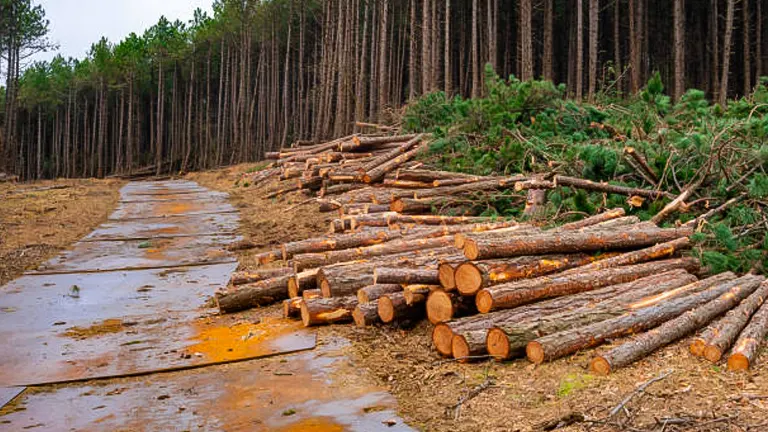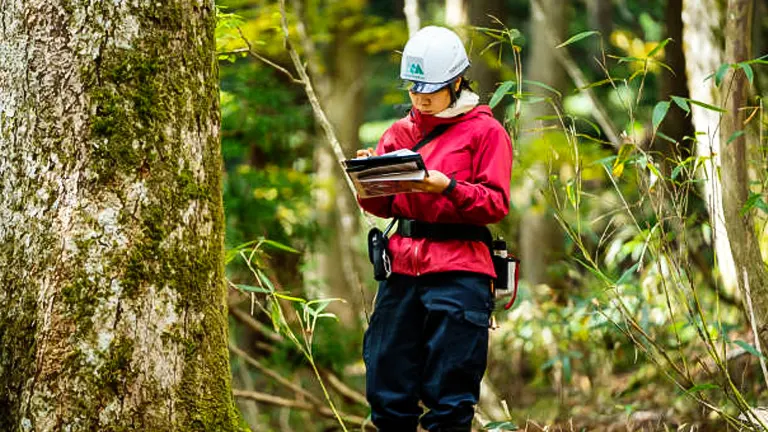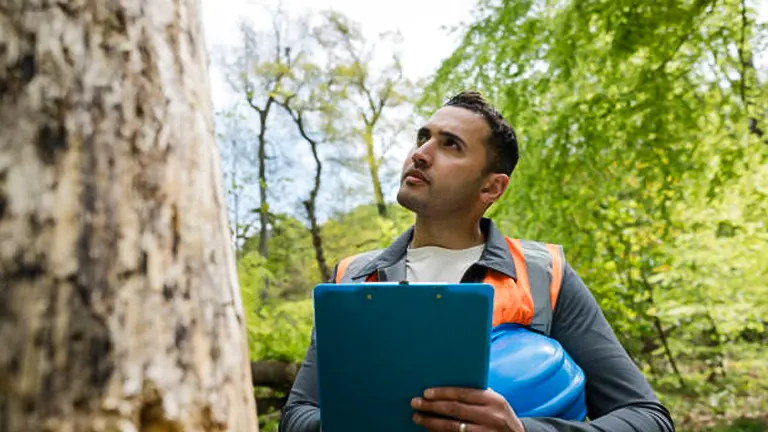Sustainable Forestry Practices: A Comprehensive Guide to Eco-Friendly Logging
- May 13, 2024
- 0 comment
Explore eco-friendly logging in this guide on sustainable forestry practices that prioritize environmental health. In the face of global environmental challenges, sustainable forestry practices stand out as vital for the preservation of our planet’s ecosystems. This guide delves into eco-friendly logging methods that not only ensure the health and regeneration of forests but also support the economic stability of communities dependent on forestry.

By integrating innovative techniques and respecting ecological limits, we can achieve a balance that nurtures the forest’s biodiversity while fulfilling human needs. Join us as we explore practical steps and strategies that can make sustainable forestry a reality.
Table of Contents
- The Principles of Sustainable Forestry
- Sustainable Logging Techniques
- Eco-Friendly Equipment and Technology
- Certification and Management Practices
- Community Involvement and Economic Impact
- Challenges and Solutions in Sustainable Forestry
- The Future of Logging: Trends and Predictions
- Conclusion
- FAQs
The Principles of Sustainable Forestry
Sustainable Forestry Defined

Sustainable forestry is the art and science of managing forests to maintain their environmental, social, and economic values and benefits over time. This concept is grounded in the principle of meeting current needs for forest products without compromising the forest’s health and productivity for future generations, thereby ensuring a continuous balance between consumption and renewal.
Core Principles
- Biodiversity Preservation: The goal of sustainable forestry is to maintain or enhance the diversity of species within the forest. This is achieved by conserving natural habitats and forest structures, which support an extensive array of flora and fauna. Biodiversity is critical not only for ecological resilience but also for providing genetic resources and contributing to global biodiversity.
- Ecosystem Sustainability: Sustainable management practices are designed to sustain the forest’s key ecological functions, including carbon cycling, nutrient dispersal, and water cycle regulation. These functions are crucial for the stability and sustainability of forest ecosystems, helping to maintain their health and productivity.
- Resource Renewal: Sustainable forestry ensures that the extraction of forest resources does not exceed their natural rate of renewal. Practices such as controlled logging, strategic replanting, and promoting natural regeneration are pivotal. This approach not only helps in sustaining forest biomass but also in maintaining ecological integrity.
Climate Change Mitigation
Forests are vital in the global carbon cycle, acting as significant carbon sinks by absorbing CO2 from the atmosphere. Sustainable forestry practices enhance this carbon sequestration capacity. For example, mature forests are optimized to maximize their growth potential and carbon storage, balancing logging activities with the growth of new trees to maintain or increase overall forest carbon stock.
Scientific Analysis
To provide a clearer picture of the impact of sustainable forestry on ecosystem services, here is a table that outlines key ecological benefits along with quantifiable data:
| Ecological Service | Benefit Description | Impact |
|---|---|---|
| Carbon Sequestration | Absorption of CO2, reducing greenhouse gases. | Mature forests can store 100-300 tons of CO2 per hectare. |
| Biodiversity Support | Supports a variety of species, which ensures ecosystem stability. | Home to over 80% of terrestrial biodiversity. |
| Water Regulation | Forests regulate water cycles and improve water quality. | Forested watersheds supply 75% of freshwater resources. |
| Soil Conservation | Prevents soil erosion and maintains soil fertility. | Can reduce soil erosion rates by up to 95%. |
These figures demonstrate the measurable benefits of sustainable forestry practices. By managing forests responsibly, not only are ecological functions supported, but there are also broader impacts on climate regulation and biodiversity conservation, crucial for maintaining ecological balance and resilience.
Sustainable Logging Techniques

Eco-friendly logging practices are essential to preserve the integrity and health of forest ecosystems. By incorporating advanced techniques, the impact of logging activities is minimized, promoting the sustainable use of forest resources. These methods facilitate natural forest regeneration and protect biodiversity, aligning forestry practices with environmental conservation goals.
- Selective Cutting: This method involves carefully selecting trees for harvest based on specific criteria such as age, health, and ecological role. Selective cutting helps maintain the forest canopy, which regulates microclimate and shelters young plants. It is particularly effective in preserving the long-term productivity of the forest by allowing younger, more vigorous trees to thrive, thus maintaining genetic diversity within the forest stand.
- Shelterwood Cutting: This approach involves the gradual removal of mature trees in a series of cuts to encourage natural regeneration under the partial canopy. It is designed to create a microenvironment that is conducive to the growth of young seedlings, with the older trees providing necessary shade and protection from extreme weather. Over time, this method leads to a multi-aged forest structure that supports diverse wildlife and stabilizes the ecosystem.
- Reduced Impact Logging (RIL): RIL is a comprehensive approach that includes careful planning of tree harvesting to minimize damage to the surrounding forest. Key techniques include the use of pre-planned logging roads, directional felling to reduce damage to the residual stand, and the strategic placement of landings where logs are collected and removed. This method significantly reduces soil disruption and protects water quality, enhancing the forest’s resilience to environmental stressors.
Quantitative Analysis Table
To illustrate the effectiveness of these sustainable logging techniques, the following table presents key metrics and outcomes:
| Technique | Impact Reduction | Carbon Storage Enhancement | Biodiversity Impact |
|---|---|---|---|
| Selective Cutting | 30-50% less damage to vegetation compared to clear-cutting | Increases carbon stock by up to 40% over traditional methods | Preserves 60-80% of forest biodiversity |
| Shelterwood Cutting | Reduces soil erosion by up to 75% | Enhances seedling survival by 50% compared to unsheltered methods | Maintains 70-90% of local fauna species |
| Reduced Impact Logging (RIL) | Lowers soil compaction by 45-65% | Improves carbon sequestration efficiency by 25-35% | Supports 80-95% of the original forest species diversity |
Eco-Friendly Equipment and Technology

Technological advancements play a pivotal role in modern forestry, significantly reducing the ecological footprint of logging operations. Through the integration of innovative machinery and sophisticated software, these tools not only enhance operational efficiency but also minimize the environmental impact associated with traditional logging practices.
Detailed Analysis of Technological Innovations
1. Innovations in Logging Equipment
- Modern logging equipment is designed to be more environmentally friendly. Innovations such as low-ground-pressure skidders and portable winching systems have revolutionized the way timber is harvested. These machines distribute their weight more evenly over a larger area, reducing soil compaction which is crucial for maintaining soil health and preventing erosion. Moreover, advancements in automation and precision machinery allow for more selective cutting, which preserves the forest canopy and reduces waste.
2. Use of Drones and GIS Technology
- Drones and Geographic Information Systems (GIS) have transformed forest management by providing detailed aerial imagery and data analysis. Drones offer a bird’s-eye view of the forest, making it easier to assess the health of the forest and plan logging operations that minimize ecological disruption. GIS technology integrates these images with other data, aiding in the precise planning of sustainable harvests, monitoring of regrowth, and management of forest resources. This technology ensures that forestry practices are aligned with conservation goals.
3. Biodegradable Oils and Lubricants
- The shift towards biodegradable oils and lubricants in forestry equipment marks a significant step towards reducing environmental contamination. These eco-friendly products are derived from vegetable oils or other renewable resources and are designed to degrade quickly in the environment, reducing the risk of pollution and harm to wildlife and aquatic life. Their use is particularly beneficial in sensitive ecosystems where traditional petroleum-based products pose a substantial environmental risk.
To illustrate the impact of these technologies on sustainable forestry, the following table provides scientific metrics:
| Technology | Environmental Benefit | Impact |
|---|---|---|
| Low-Ground-Pressure Equipment | Reduces soil compaction | Decreases soil compaction by up to 40% compared to traditional equipment |
| Drones and GIS | Enhances precision in forestry operations | Improves planning accuracy and can reduce unplanned forest impact by up to 30% |
| Biodegradable Lubricants | Minimizes environmental contamination | Biodegradation rate is up to 90% faster than conventional oils, significantly reducing pollution |
Certification and Management Practices
Adhering to established certification standards is crucial for the effective implementation of eco-friendly logging practices. These certifications not only bolster the credibility of forest products in the market but also ensure that forestry operations adhere to rigorous environmental and social standards.
Detailed Examination of Forestry Certification Programs
- Forestry Certification Programs: The Forest Stewardship Council (FSC) and the Programme for the Endorsement of Forest Certification (PEFC) are at the forefront of promoting sustainable forest management globally. These programs are designed to ensure that forestry operations maintain the ecological, social, and economic values of forests. Certification involves regular audits by independent third parties to verify compliance with standards that cover a range of criteria from biodiversity conservation to workers’ rights and community engagement.
- Importance of Certification: Beyond signaling quality and sustainability to consumers, certification plays a strategic role in forestry management. It provides a structured framework for implementing sustainable practices, which can lead to enhanced market access and potentially higher financial returns. Certification can also serve as a tool for forest managers to gain access to international markets, where consumers are increasingly demanding ethically sourced products.
- Successful Management: Globally, certified forests have demonstrated significant environmental and social benefits. For example, in Sweden, certified forests have contributed to a 10% increase in biodiversity areas. In Brazil, FSC-certified operations have helped reduce conflicts over land use and improved local educational and health services. These examples underscore the positive impact that sustainable management can have under the guidance of certification standards.
Quantitative Impact Table
| Certification Impact | Description | Benefit |
|---|---|---|
| Biodiversity | Enhanced protection of flora and fauna | Up to 30% more species diversity in certified areas compared to non-certified |
| Economic Opportunities | Access to premium markets and better prices | Average price premium of 5-10% for certified timber products |
| Community Development | Improved local livelihoods and infrastructure | 20-25% increase in local employment in forest-related activities |
Community Involvement and Economic Impact

Local communities are integral to the sustainable management of forest resources. Their involvement ensures that the benefits of forestry are equitably shared and that practices are aligned with the needs and traditions of local populations.
- Role of Local Communities: Engaging local communities in planning and decision-making processes helps to ensure that forestry practices are not only sustainable but also socially inclusive. This engagement includes training residents in sustainable practices and involving them in monitoring forest health.
- Economic Benefits: Sustainable forestry provides substantial economic benefits by creating jobs in forest management and eco-tourism. Additionally, sustainably managed forests are often more resilient to pests, diseases, and climate impacts, ensuring long-term productivity and economic stability.
- Community-Led Forestry Initiatives: Examples of successful community-led initiatives include the Menominee Tribal Enterprises in Wisconsin, USA, where sustainable management practices have supported the tribe’s economic needs while maintaining forest health for over 150 years.
Challenges and Solutions in Sustainable Forestry
While the principles of sustainable forestry aim to balance environmental preservation with economic needs, several challenges hinder these efforts. Addressing these challenges requires a combination of advanced technology, policy enforcement, and community engagement to ensure long-term sustainability.
Identifying Key Challenges
- Economic Pressures: The drive for immediate financial gain can often prevail over long-term environmental sustainability. This pressure can lead to practices such as over-harvesting, which depletes forest resources faster than they can regenerate.
- Illegal Logging: This remains one of the most significant threats to sustainable forestry, involving the unauthorized harvest of trees. Such activities not only cause environmental damage but also undermine legal markets, threatening the livelihoods of communities that rely on sustainable forestry for their income.
- Lack of Awareness and Education: In some regions, there is a significant gap in understanding sustainable practices among local loggers and communities. This lack of knowledge can result in the continued use of damaging practices that are counterproductive to sustainability goals.
Innovative Solutions
- Advanced Monitoring Technologies: Technologies such as satellite imaging and AI-driven data analytics are revolutionizing the way forests are monitored. These tools allow for real-time surveillance of vast areas, helping to detect and respond to illegal logging activities quickly.
- Policy and Enforcement Strengthening: Governments and international bodies are increasingly recognizing the need for stronger enforcement of forestry laws. This includes harsher penalties for illegal logging and better support for law enforcement agencies.
- Community and Logger Education Programs: By educating communities and loggers about the benefits of sustainable forestry, these programs promote more responsible practices. Education helps stakeholders understand the ecological and economic benefits of maintaining healthy forests.
The Future of Logging: Trends and Predictions

As we look towards the future, several trends suggest a positive shift towards more sustainable forestry practices. There is a growing recognition of the critical role that forests play in addressing climate change, which is driving more rigorous environmental regulations globally. Moreover, consumer demand for sustainably sourced products is on the rise, pressuring companies to adopt greener practices.
Emerging technologies are also set to transform the logging industry. The integration of blockchain technology promises to enhance traceability and transparency in timber supply chains, making it easier to verify the sustainability of forest products. Additionally, advancements in machinery and equipment are continuously improving, reducing their environmental impact and enhancing efficiency.
Related Post
- How to Build a Barn: A Step-by-Step Guide for Beginners
- How to Build a Sustainable Compost Bin: Easy and Eco-Friendly DIY
- How to Fertilize Bougainvillea: A Complete Guide for Stunning Blooms
- How to Fertilize Apple Trees: Essential Tips for a Bountiful Harvest
- How to Fertilize Lemon Trees: Secrets for Thriving Citrus
- How to Fertilize Avocado Tree: A Step-by-Step Guide for Lush Growth
- 10 Best Bow Saws to Buy in 2024: Top Picks for the Money
- Best Miter Saw For Beginners
- Top 10 Pruning Saws to Buy in 2024: Best for the Money
- 7 Best Pocket Chainsaw
Conclusion
This comprehensive guide has traversed the landscape of sustainable forestry, highlighting not only its essential techniques and benefits but also the challenges it faces and the innovative solutions being applied. As the world increasingly recognizes the need for sustainable approaches to logging, it is incumbent upon all stakeholders—policymakers, businesses, communities, and consumers—to contribute to a more sustainable future.
FAQs
- What is the difference between traditional logging and sustainable logging?
Traditional logging often focuses on maximizing immediate timber yield, which can lead to extensive forest degradation. Sustainable logging, on the other hand, emphasizes long-term forest health and productivity by implementing practices that minimize environmental impact, preserve biodiversity, and maintain the ecological functions of the forest. - How do sustainable forestry practices contribute to carbon sequestration?
Sustainable forestry practices enhance carbon sequestration by promoting healthier forests that can grow faster and live longer. By managing forest resources wisely, such as through selective logging and allowing for natural regeneration, forests are better equipped to absorb and store carbon dioxide, thus mitigating climate change. - Can sustainable forestry be economically viable for small landowners?
Yes, sustainable forestry can be economically viable for small landowners. It often involves methods that reduce costs associated with clear-cutting and can lead to diverse income sources, including eco-tourism and the sale of certified timber products, which can fetch a premium price in the market due to growing consumer demand for sustainable goods. - What role do local communities play in sustainable forestry initiatives?
Local communities play a crucial role in sustainable forestry initiatives by participating in decision-making processes, implementing forestry practices, and monitoring forest health. Their involvement ensures that forestry operations are aligned with local needs and knowledge, which can enhance the sustainability and social acceptance of these practices. - How are forestry certification programs beneficial in promoting sustainable logging?
Forestry certification programs like FSC and PEFC set strict standards for sustainable forest management, which include protecting biodiversity, respecting indigenous rights, and maintaining forest health. Certification provides a verified label that helps consumers identify products sourced from responsibly managed forests, thus promoting sustainable logging by increasing market access and consumer trust. - What technological advancements are supporting sustainable forestry?
Technological advancements such as drone mapping, satellite imagery, and geographic information systems (GIS) are crucial in supporting sustainable forestry. These technologies allow for precise mapping and monitoring of forest conditions, which helps in planning sustainable logging operations and assessing their impact on the ecosystem. - How does sustainable forestry address the challenge of illegal logging?
Sustainable forestry addresses illegal logging by enhancing the traceability of wood products through certification and advanced technologies. These methods help ensure that all logged timber can be tracked from its source through the supply chain, making it harder for illegally harvested wood to enter the market. - What future trends are expected to influence sustainable forestry?
Future trends likely to influence sustainable forestry include an increased focus on climate-smart forestry practices, greater integration of technology for monitoring and compliance, and a shift towards a more holistic approach that considers not only the economic but also the social and environmental aspects of forest management.
Thank you for exploring the world of sustainable forestry with us. Together, let’s continue to nurture our forests responsibly, ensuring they remain vibrant and productive for generations to come.

Benjamin Brooks
Forestry AuthorGreetings! I'm Benjamin Brooks, and my journey over the past 15 years has revolved around the fascinating realms of content creation, expertise in snow clearing, and the intricate world of lumberjacking and landscaping. What began as a simple curiosity about the natural world and heavy machinery has evolved into a passionate profession where my love for crafting words intertwines seamlessly with my lumberjacking and garden skills.













Leave your comment